I am certain that you will love this traditional recipe for Easy Nectarine Jam. It is the ultimate way to preserve this sweet, aromatic, stone fruit to enjoy throughout the cooler months ahead. With this recipe, I will show you, with step-by-step instructions, how easy it is to make your own jam. It contains just three ingredients, fresh nectarines, sugar and lemon juice. No additional pectin is required for this golden hued jam that captures the bright flavours of summer. It is a great way to make the most of nectarines at the height of their season.
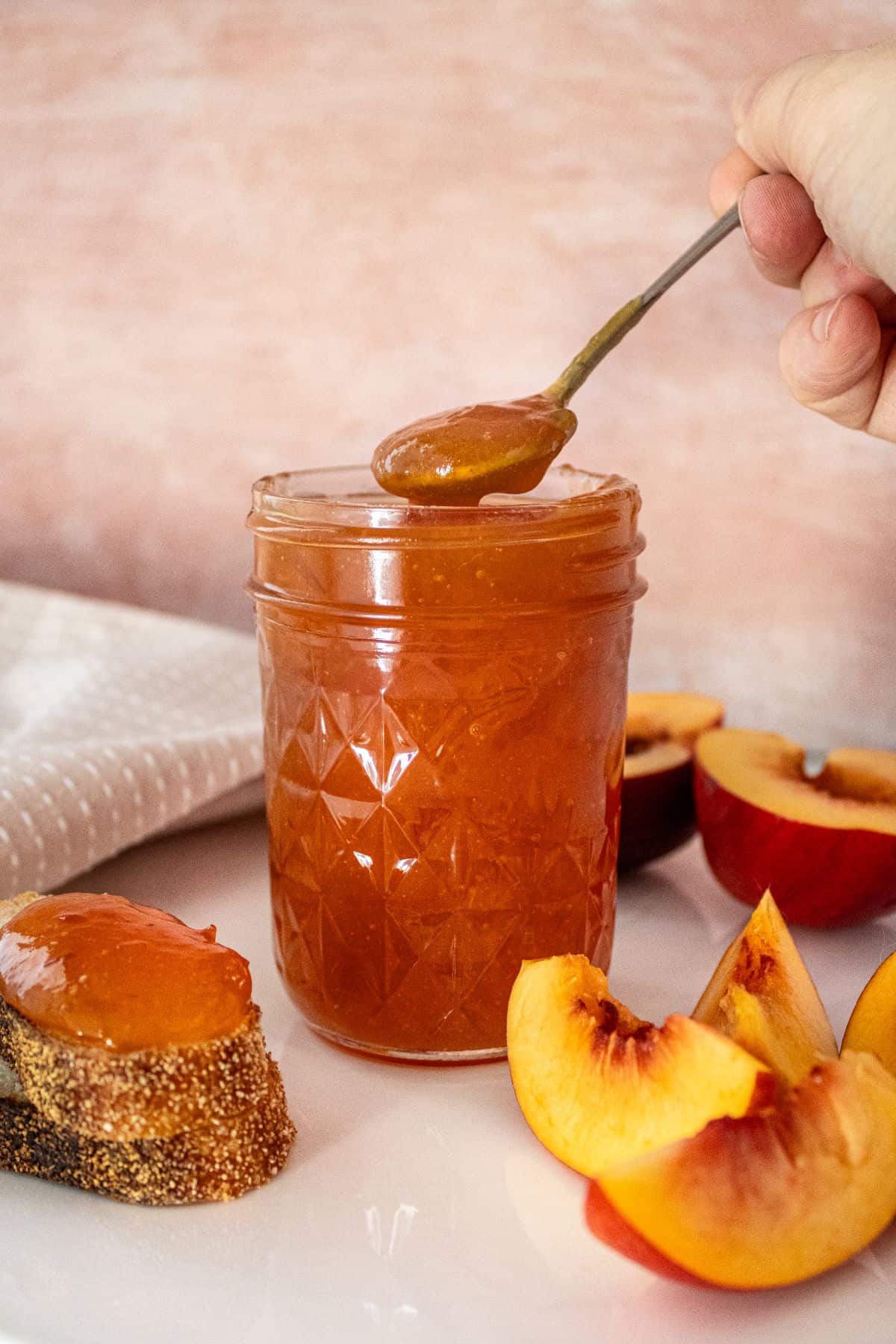
Why You'll Love This Recipe:
- For me, one of the most positive aspects of home cooking is the knowledge that I control the quality of the ingredients. Unlike some commercially prepared jam, my homemade jam does not contain any unwelcome additives, artificial preservatives or thickeners.
- You will not need any special equipment to make this recipe.
- There's no need to peel the nectarines, the skin is smooth and thin.
- You will find many ways to enjoy this sweet, aromatic jam.
Recipe Inspiration: as mentioned in my recipe for Peach Jam, my great grandfather was a grower of stone fruit. I have grown up with huge respect for the fruit and the hard-working growers and I am keen to show some of the many ways to enjoy this very beautiful fruit. Another way that I use nectarines when they are abundant is my Nectarine Chutney.
Ingredients and Substitutions:
Please see the recipe card further along in the post for exact quantities of ingredients and the full method.
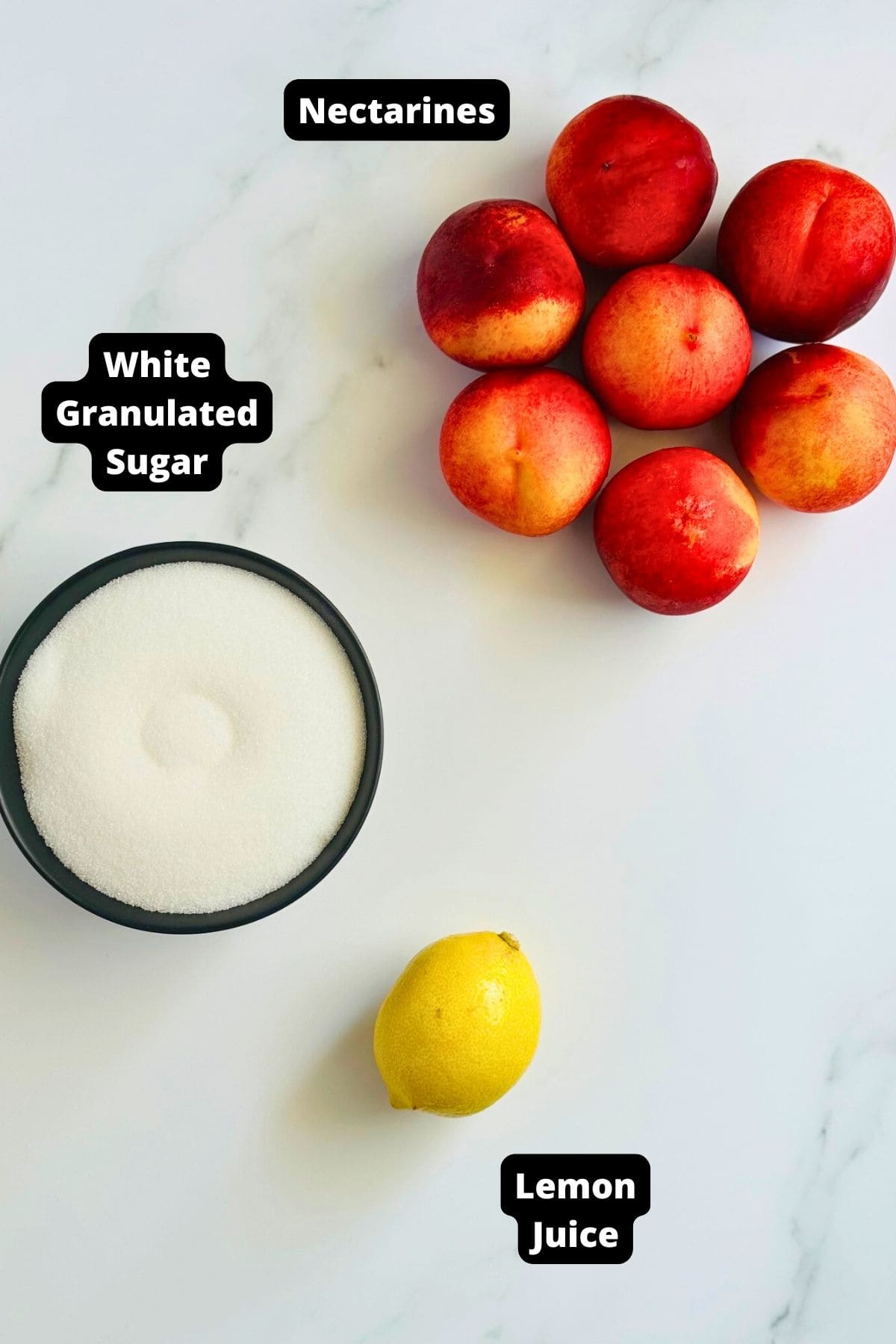
- Nectarines: we use yellow flesh nectarines as they give the jam a beautiful golden colour. Ideally, choose a freestone variety as it will make preparation much easier. As the name implies, it is easy to separate the stone from the fruit.
- Lemon juice: freshly squeezed lemon juice has an important role in jam making. It has acidity and pectin, both of which help the jam to set. Also, the acidity of the lemon juice aids with preservation and balances the sweetness.
- Sugar: along with adding sweetness, interacts with acids and pectin, and helps the jam to set. It also aids in preservation, enabling the jam to be shelf-stable to enjoy through the months ahead.
Variations:
Spices: a little cinnamon or fresh or ground ginger is a delicious addition. Just be aware that spices can alter the colour of the jam slightly.
Vanilla extract: is also a lovely addition to the jam.
How To Make Nectarine Jam:
Please see the recipe card further along in the post for exact quantities of ingredients and the full method.
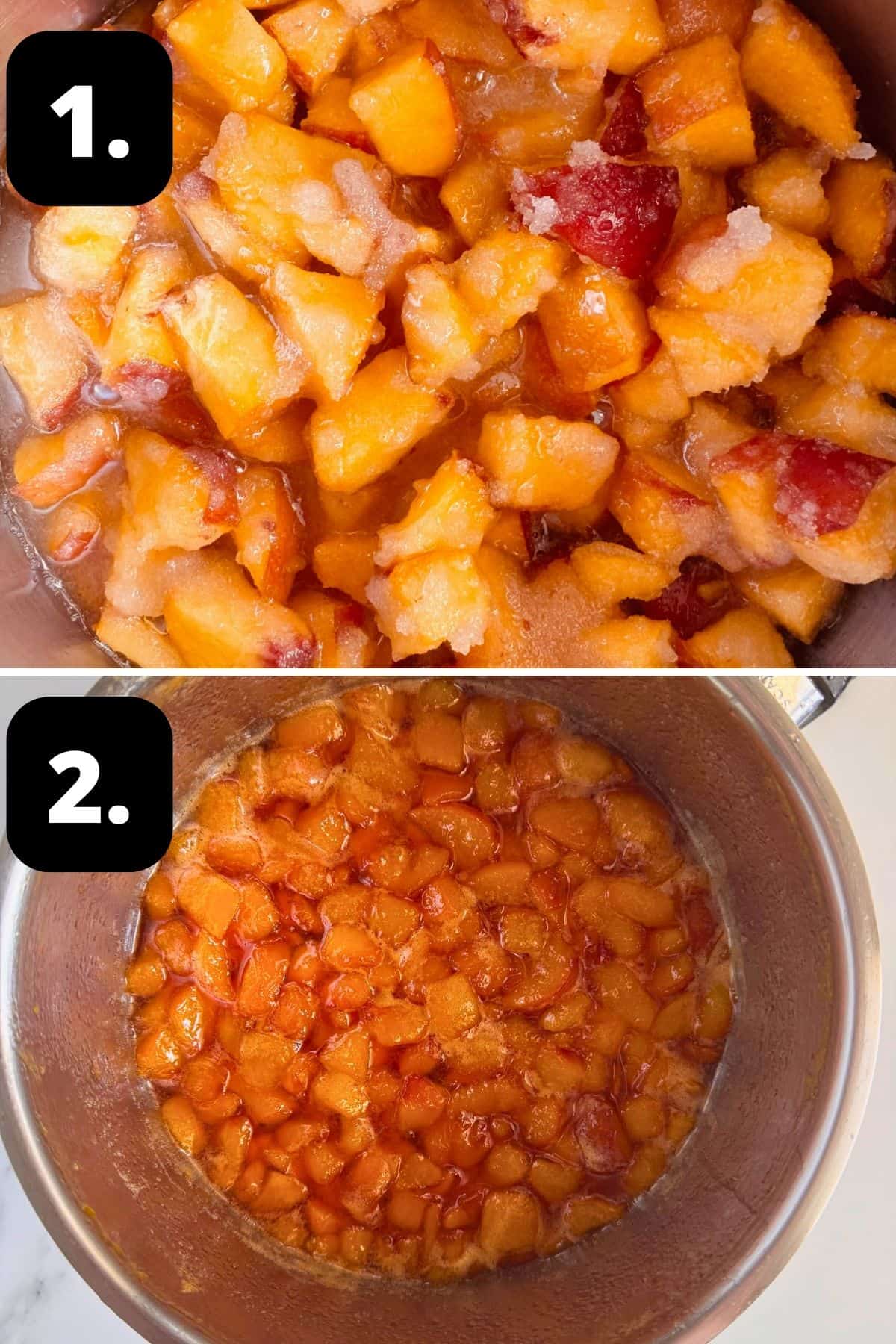
1 - Add the fruit to your saucepan:
Prepare your nectarines, and add to a large non-reactive saucepan along with the sugar and lemon juice. Give a quick stir and allow the mixture to stand.
2 - Cook the fruit:
After allowing the fruit to stand, turn the heat onto low, and stir frequently to dissolve the sugar.
Once the sugar has dissolved, increase the heat and bring the mixture to the boil.
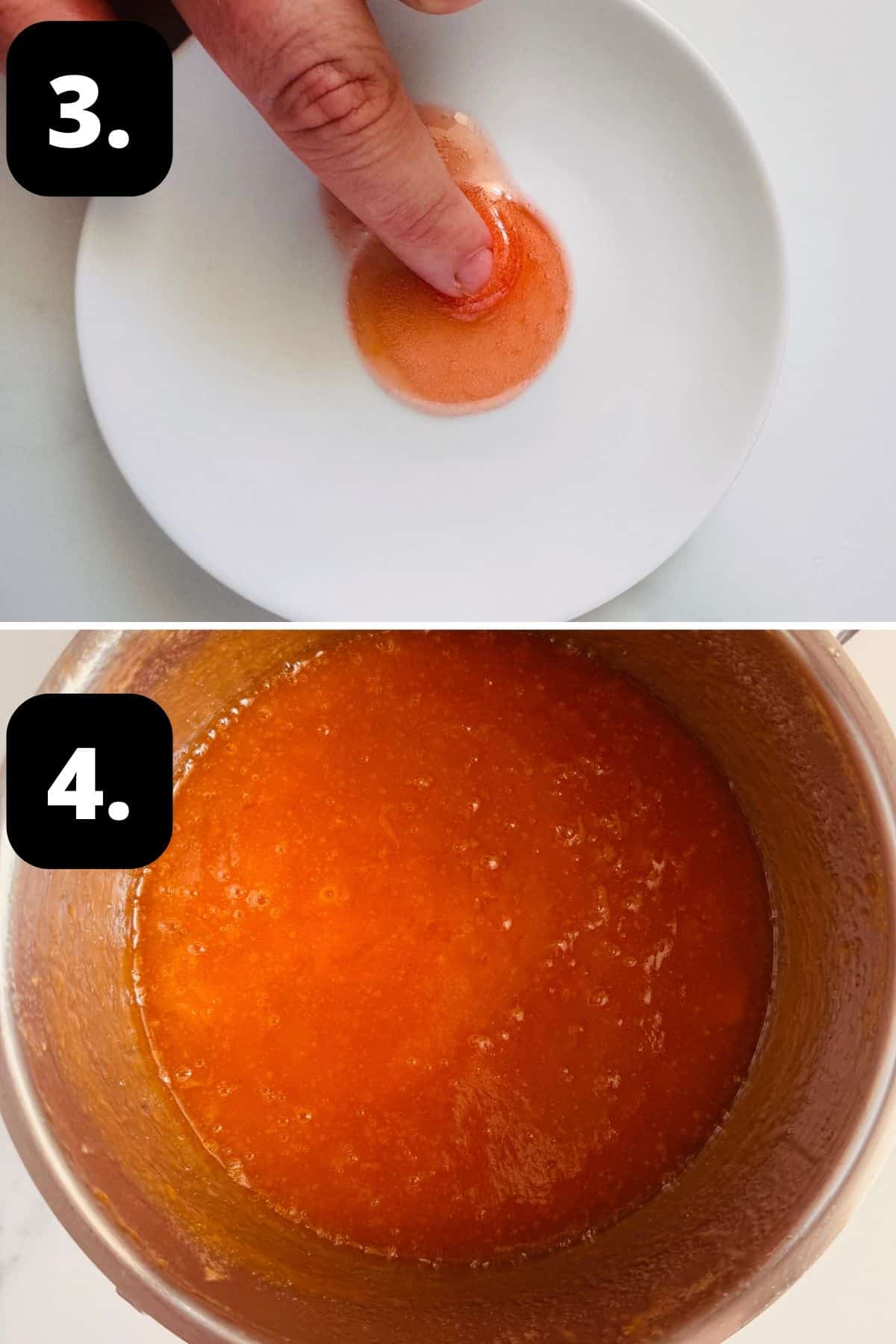
3 - Test for setting point:
Once the mixture is ready, we test for setting point. (We use two methods, which are detailed in the recipe card.)
The above photo shows the "wrinkle test" which indicates that the jam has reached setting point. For the other method we use a thermometer.
4 - Blend and add to your jars:
Use an immersion blender to blend the jam. Ladle the jam into the hot, sterilised jars and seal immediately.
Hint: recognising setting point is an essential part of jam making. Full details about the two methods we use are outlined in the recipe card.
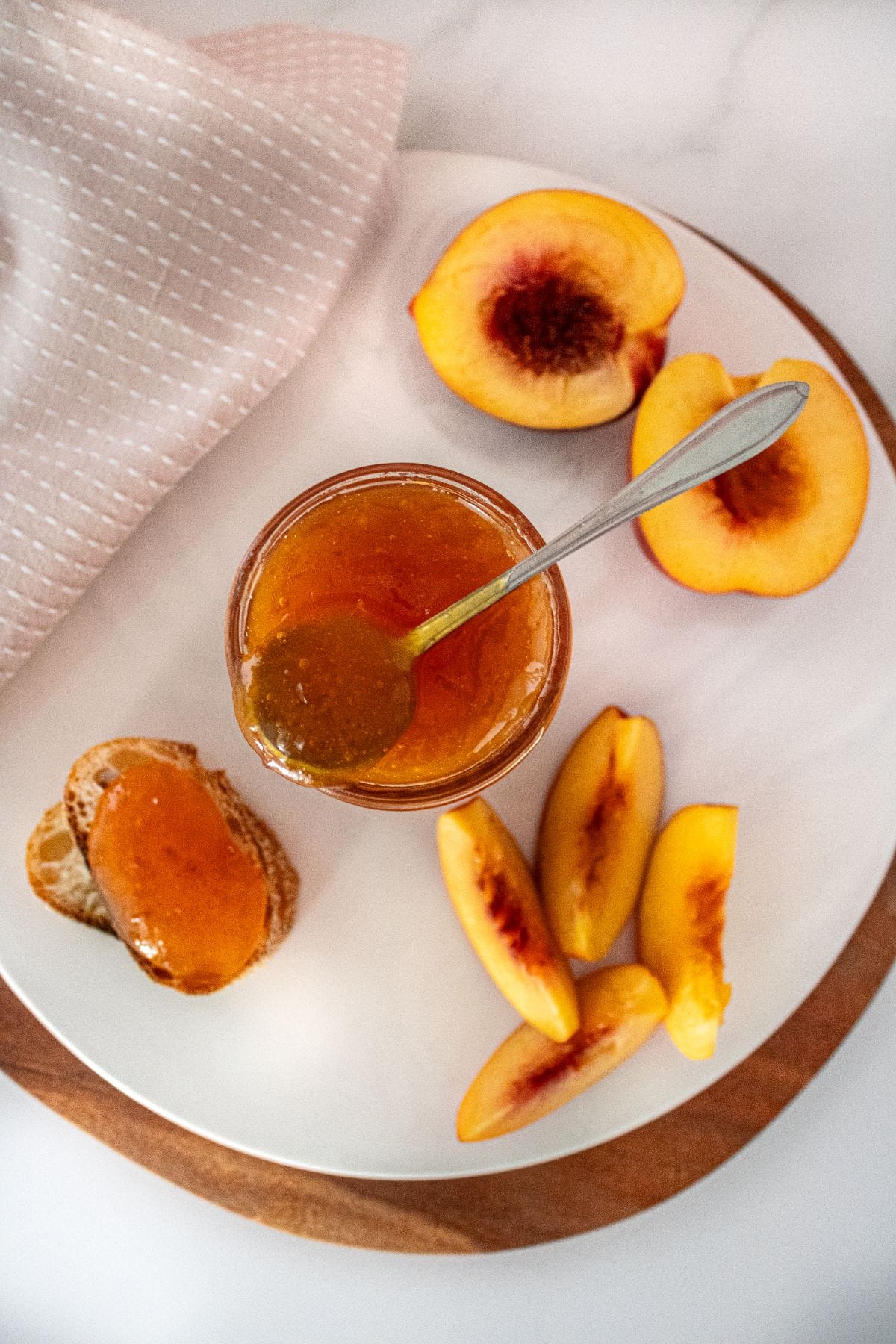
Tips for Success, Storage and FAQs:
Look for fruit that is just ripe. A ripe nectarine will be firm but give a little when you gently press it. It will have a vibrant colour and fresh aroma. Avoid fruit that is in poor condition or is overripe as it will have less pectin. It is fine to have a few underripe as they contain more pectin.
If you follow the instructions in the recipe to thoroughly sterilise the jars, use the amount of sugar in the recipe and cook the jam as advised, the jam will be shelf-stable for a year.
Store in a cool, dark, dry location. After opening a jar, you should store it in the fridge and be sure to always use a clean spoon to remove the jam.
Pectin is a naturally occurring starch that is found in fruits and vegetables. The amounts of pectin that fruits contain varies, which means that some jams set more readily than others. For this reason, we add fresh lemon juice to boost the pectin content. When combined with acid and sugar, and cooked to a high temperature, it forms a gel.
Conventional jams require a lot of sugar, but it should not be reduced. The sugar is not just a sweetener; it helps the jam set and acts as a preservative. If you reduce the sugar, your jam may not be shelf stable.
Top Tip:
Although you don't need special equipment, we have a few tips regarding the saucepan you use. You need a wide saucepan with enough height to enable the jam to boil vigorously. Avoid aluminium, copper or iron pans as the acid in the fruit may react with the pan, giving the jam a metallic taste. And for safety reasons, use a long-handled wooden spoon to keep your hand away from the boiling jam. Also, do not use a metal spoon, it will become dangerously hot.

Serving Suggestions:
There are many ways to enjoy this beautiful jam. Some suggestions are:
- With our Buttermilk Scones and cream; it's always a winner.
- Enjoy it for breakfast, served with a croissant or toast.
- Swirl some through plain Greek yoghurt.
- Add some to a cheese board; it is perfect to serve with a piquant blue cheese or a creamy ripe Brie. The salty/sweet pairing works well.
- Use the Nectarine Jam to top our Oat Flour Waffles or Oat Pancakes.
- Use it to make a beautiful glaze for a Christmas ham.
- As a filling in our Jam Oatmeal Bars.
- Tie a pretty ribbon around a jar. It is a lovely homemade edible gift.
I do hope that you enjoy this beautiful jam as much as we do. Please let me know in the comments if you try it.
Alex xx
More Delicious Recipes For You To Try:
Stay in touch!
Follow me on Facebook, Pinterest, Flipboard and Instagram and subscribe to my newsletter.
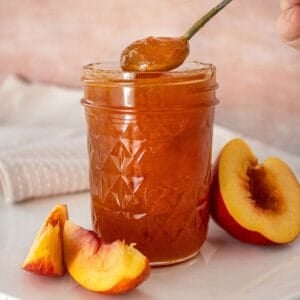
Easy Nectarine Jam
Please note:
For accuracy, when weights are provided, we recommend weighing your ingredients. This will produce the best results. All oven temperatures listed are for fan forced.
Ingredients
- 1 kg (2.2 lbs) fresh nectarines - prepared weight See Note 1
- 750 g (3 ⅓ cups) white granulated sugar See Note 2
- 80 ml (⅓ cup) lemon juice - freshly squeezed See Note 3
Instructions
Sterilising the Jars:
- Sterilise the jar or jars you'll be using to store the jam. Choose glass jars with an airtight, metal lid and ensure they have been washed by hand in hot soapy water then rinsed well.Check that the metal lids do not have rubber inserts – if they do, allow them to air dry, instead of placing in the oven. Preheat the oven to 130 Degrees C (270 F) and place the jars in the oven for 15-20 minutes.Keep the jars warm.
For the Nectarine Jam:
- Place two small saucers or plates in the freezer. See Note 6.
- Wash and dry the nectarines. Cut the nectarines in half, removing and discarding the stones and stems. Trim away any blemishes from the fruit. We don't peel the fruit for this recipe as the skin is soft and cooks down. Cut the nectarines into 2.5 cm (1-inch) chunks. Add the nectarines, sugar and lemon juice to a large saucepan and mix well with a long-handled wooden spoon. Allow to stand for 10 minutes.
- After standing the mixture, turn the heat on low and stir until the sugar dissolves. (This can take 8-10 minutes)If sugar crystals get caught on the side of the saucepan, scrape down with a spatula.
- Once the sugar is dissolved, increase the heat to a rolling boil.Boil for 15-20 minutes, stirring frequently. After 15 minutes, begin to check for the setting point. Your jam will likely take between 15-20 minutes, but it will depend on the width of your saucepan and how rapidly the jam is boiling.
- Turn off heat and spoon a little of the jam onto one of your chilled saucers.Let it stand for 30 seconds to cool, and then run your finger through it. If it wrinkles, even slightly, it is ready. If it is still quite liquid, put it back on the heat and boil for a further 1-2 minutes, and retest until ready. Alternatively, you could use a candy thermometer. Setting point is reached when the thermometer reaches 105 Degrees C (220 F).
- Skim any scum off the top of the jam with a spoon.
- If you wish, you can use an immersion blender to puree the jam or leave it as is.If you are not pureeing the mixture, allow it to stand for five minutes before adding to your jars.
- Carefully ladle your jam into your hot jars and put the lids on immediately. Allow the jam to cool completely. Wipe the jars to remove any spills, and store the jam in a cool, dark place.
Notes
- Nectarines: this is the prepared weight, after the stones and any blemishes have been removed. Ensure your fruit is freshly picked and of good quality. Avoid fruit that is bruised or over-ripe. The nectarines contain pectin which aids in the jam setting. If your fruit is older, it will contain less pectin. Good quality fruit that is frozen fresh and isn't overly icy can be used. It can be used from frozen. The cooking times will be similar - just test as per the recipe. We use a no-peel method for this recipe, as the skin is soft and cooks down. The colour of your jam will vary depending on the nectarines you use.
- Sugar: do not reduce the amount of sugar. Whilst the sugar sweetens the fruit it also acts as a preservative and helps the jam to set. If you reduce the sugar, your jam may not be thick enough or shelf-stable.
- Lemon juice: not only balances the sweetness of the sugar, but it also contains acid and pectin, which help to set the jam.
- Sterilising the jars: properly sterilising your jars is an essential process to remove bacteria that could cause your preserves to spoil.
- Chilled plates: we use the chilled plates to quickly cool the jam when testing the setting point.
- Saucepan: I choose a large saucepan that has enough height to enable the jam to boil vigorously. More surface area means the liquid will evaporate faster; having sufficient height means you can boil the jam at a higher heat and maintain the fresh flavour of the nectarines. Avoid aluminium, copper or iron pans; the acid in the fruit may react with the pan, giving the jam a metallic taste.
- Wooden spoon: do not use a metal spoon - it will become very hot. A long-handled wooden spoon is important to avoid being burnt by a splash from boiling jam.
- Setting point: my jam reached its setting point about 18 minutes after it began to boil rapidly. Boiling time will vary depending on the size of your saucepan and the heat that you apply.
- Storage: when the recipe is made according to instructions and the jars have been sterilised properly, the jam will be shelf-stable for up to a year when stored in a cool, dark place. A jar should be refrigerated after opening. This recipe has not been tested using a canning method. Please refer to the USDA Canning Guidelines for techniques, or follow a recipe designed for long-term canning.
- Nutritional information: is based on one whole jar. The nutritional information is an estimate only.
Nutrition Estimate:
Nutritional Disclaimer:
The nutritional information is an estimate only, and is derived from online calculators. For accurate results, we recommend calculating the nutritional information based on the ingredients and brands you use.

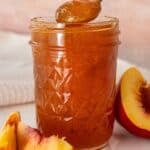
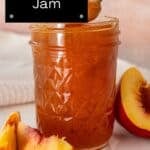
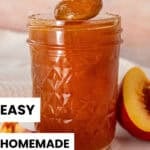

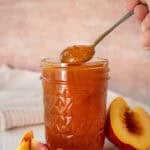
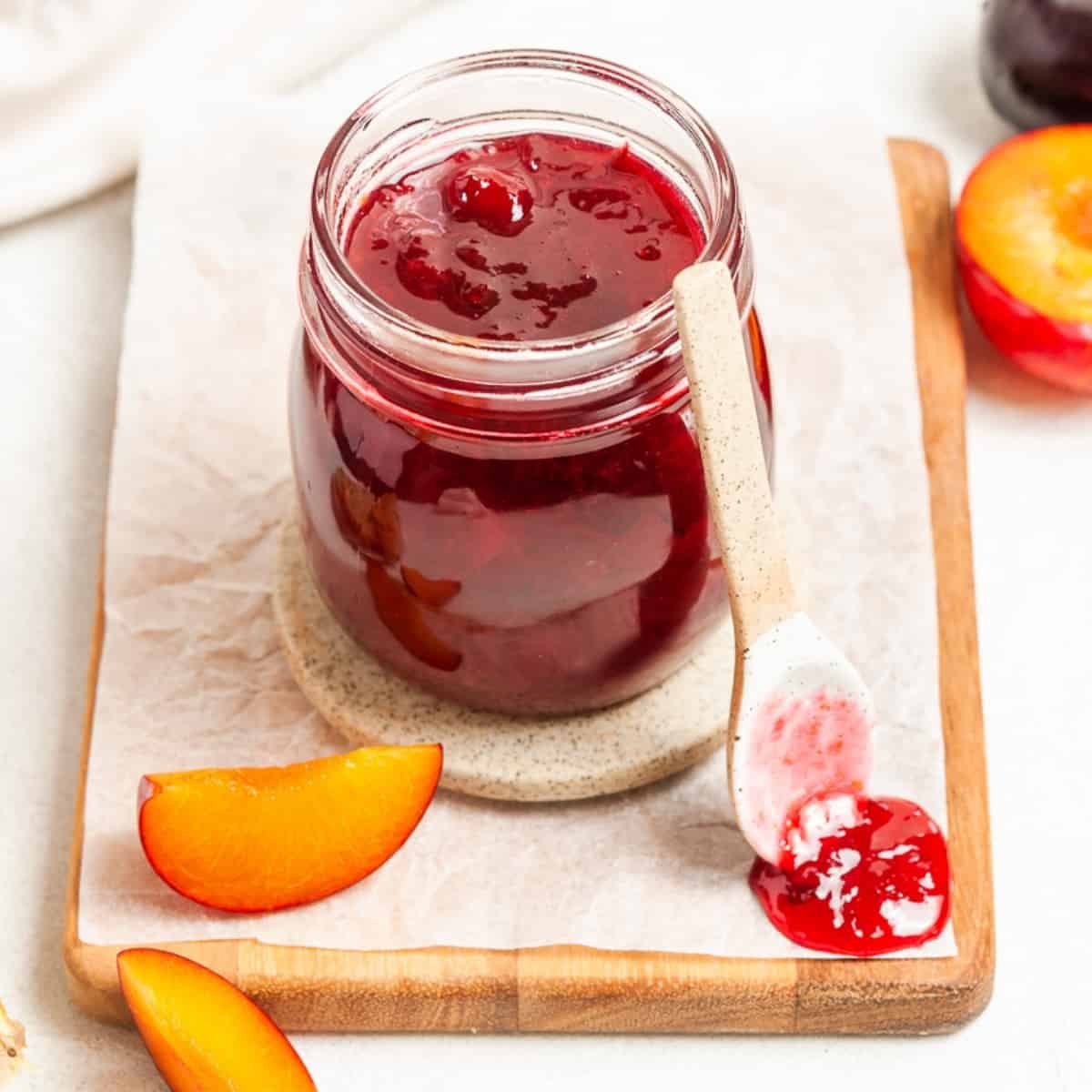
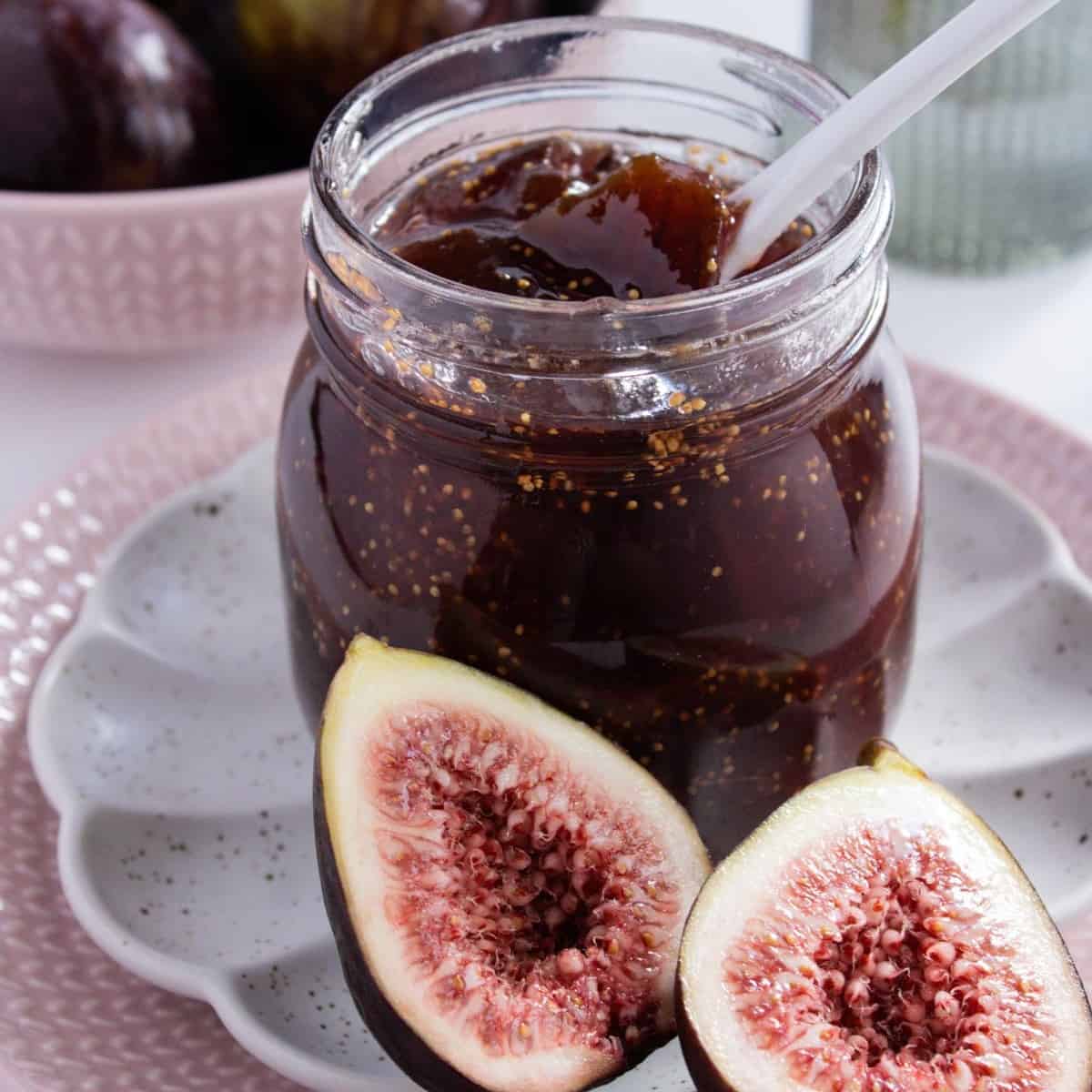
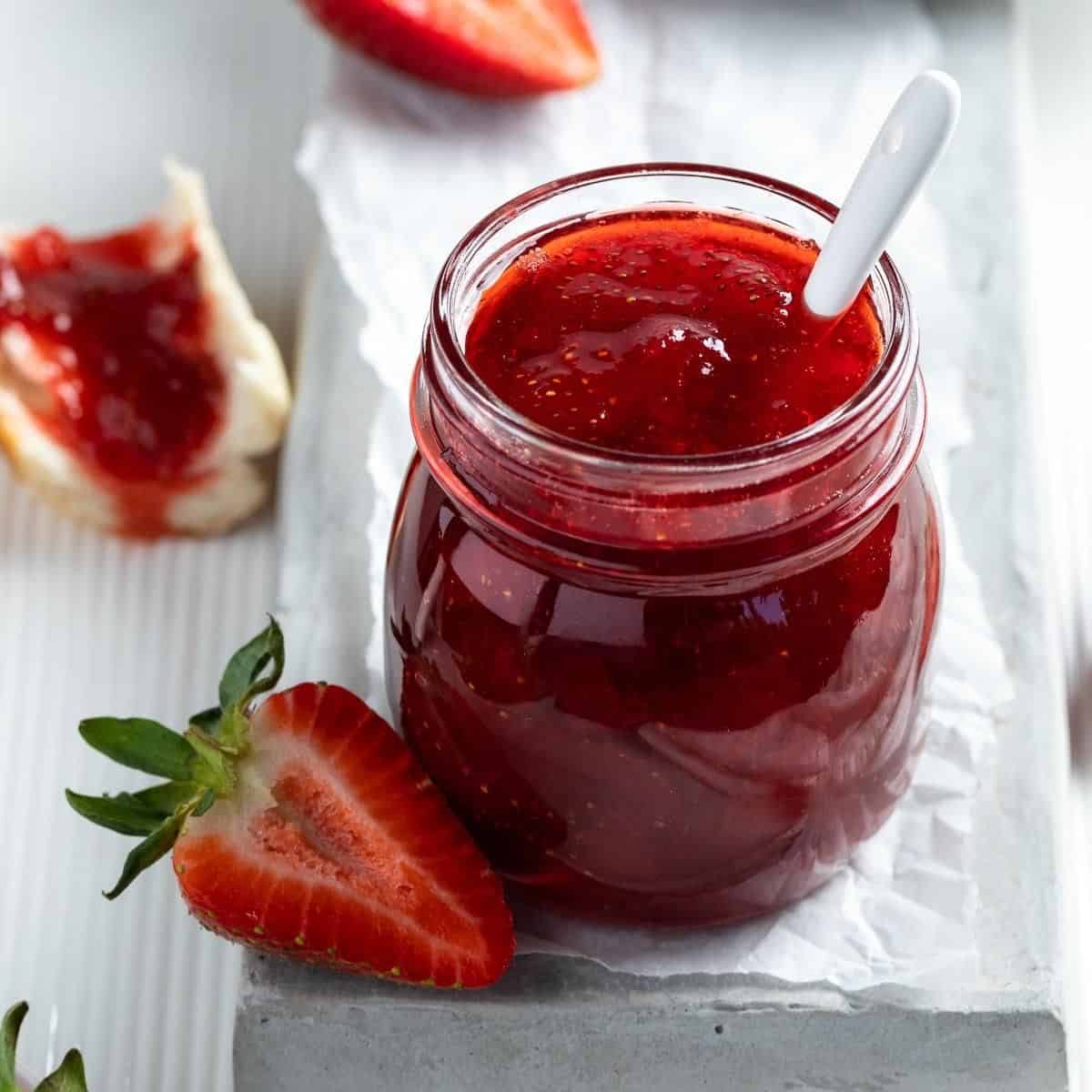
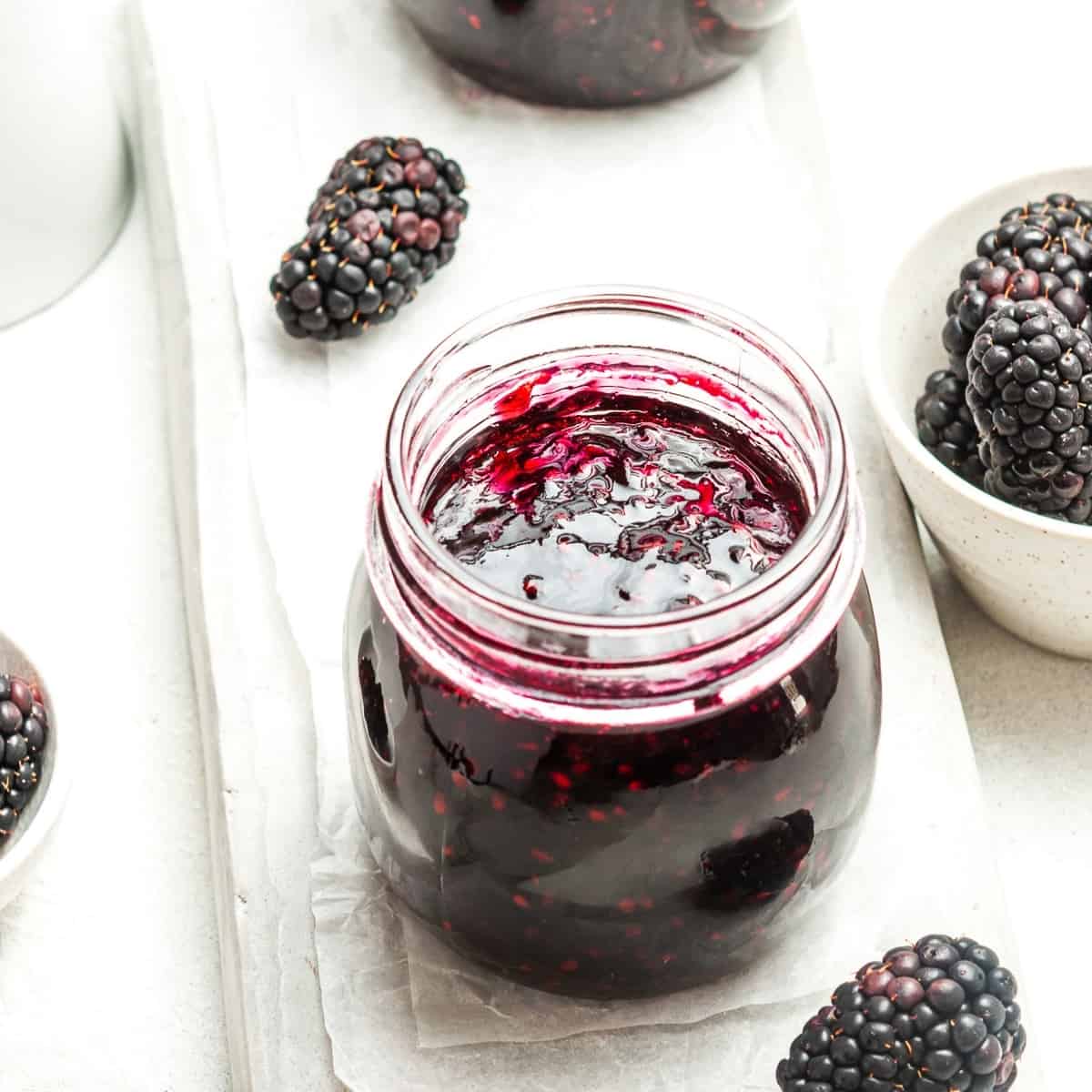
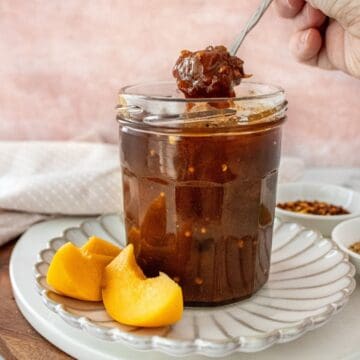
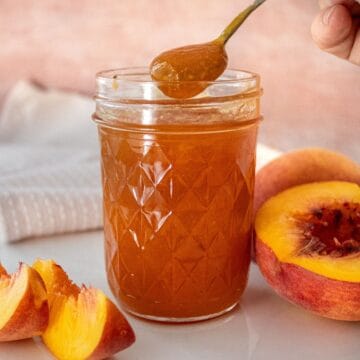
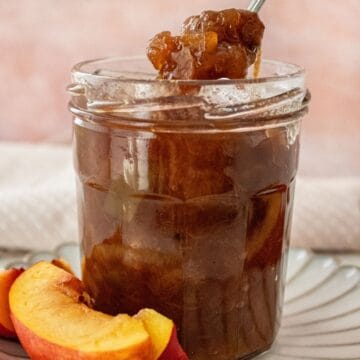
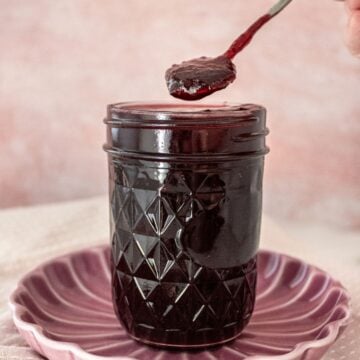
Leave a Comment